Abstract
The aerobic flora of the axilla and forehead of 20 normal human subjects was studied through a 3-week course of 600 mg of demethylchlortetracycline daily and a 3-week follow-up. In general in the axilla, an initial fall in bacterial density was followed by recovery in numbers due to the proliferation of resistant coagulase-negative cocci and diminution of the lipophilic diphtheroid group of bacteria within 1 week of treatment. During the remainder of the treatment period, the flora was essentially stable in both density and composition. In the follow-up phase, the initial flora was slowly re-established but resistant cocci persisted for more than 3 weeks. On the forehead the fall in density was slower and recovery during treatment was incomplete. Resistant coagulase-negative cocci became dominant and persisted through the follow-up phase. In two individuals, temporary colonization of the axilla by Staphylococcus aureus was seen.
Full text
PDF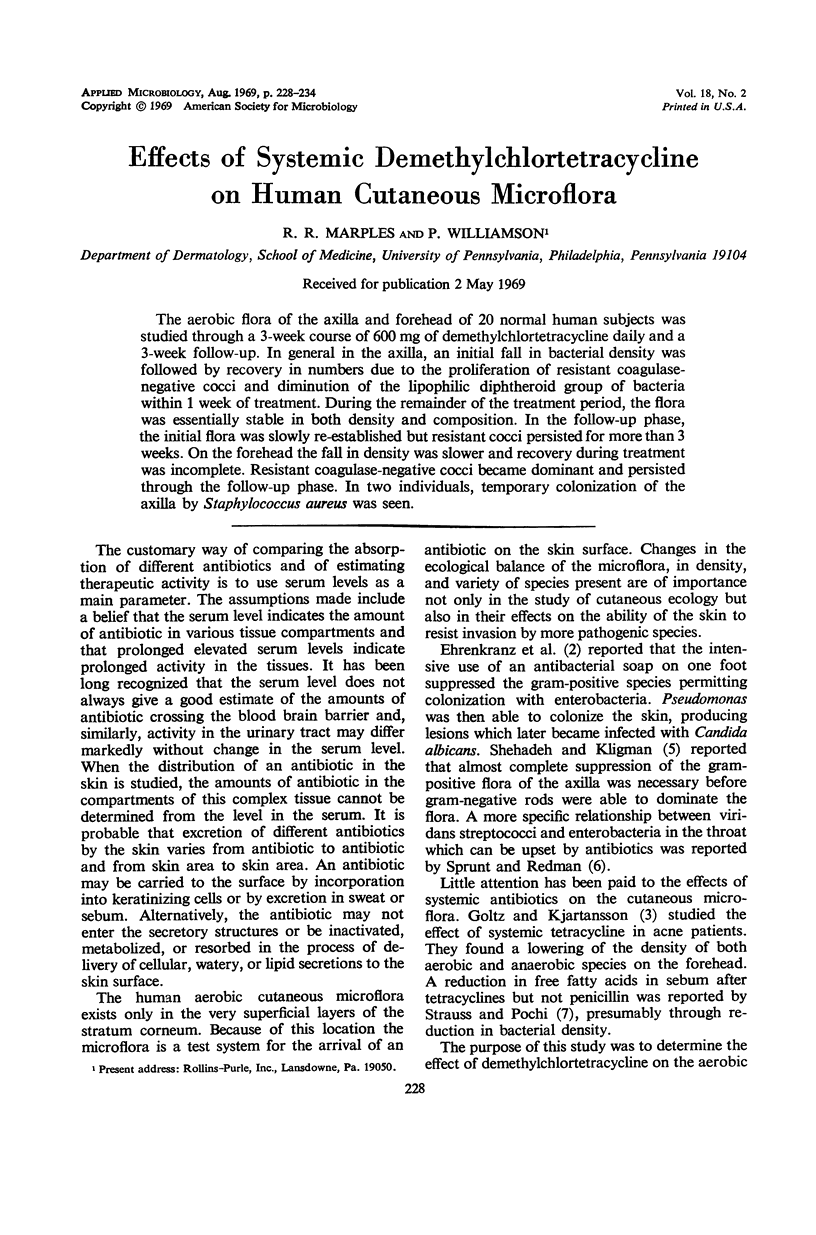
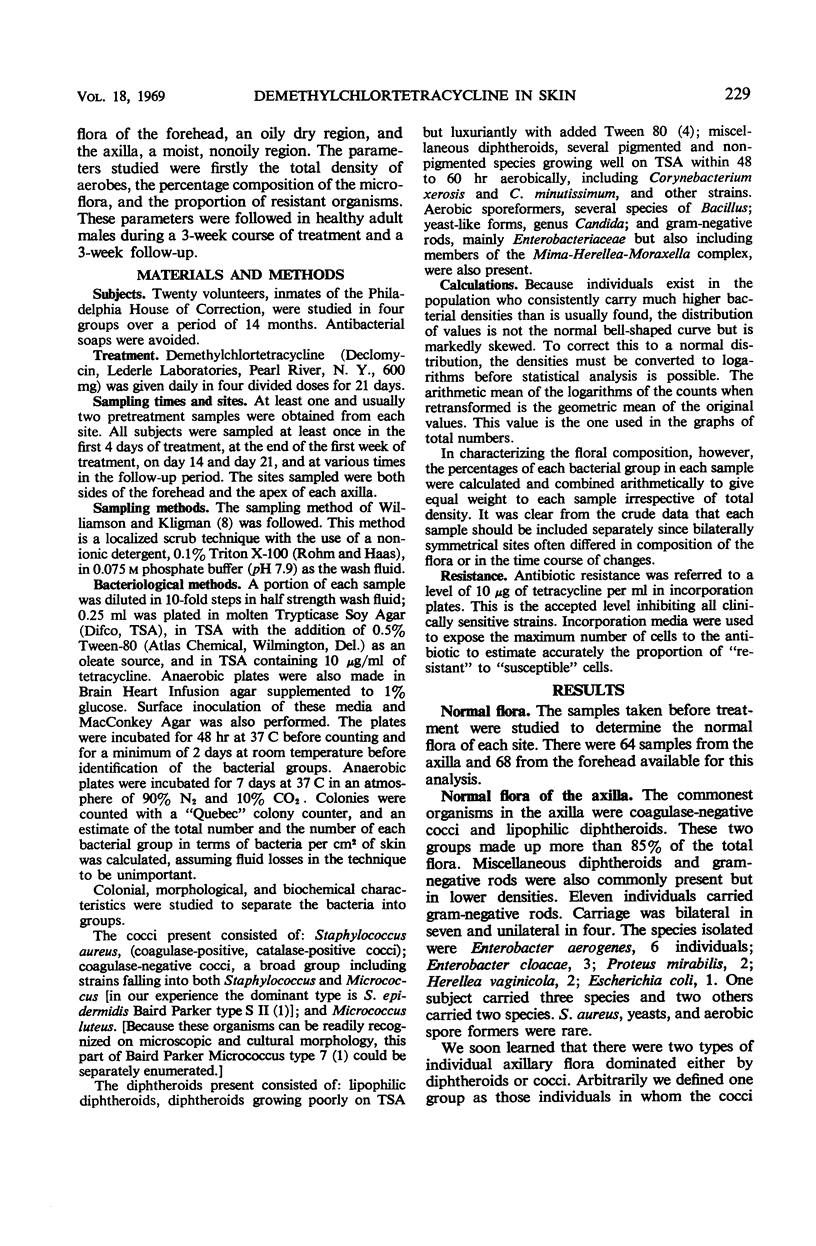
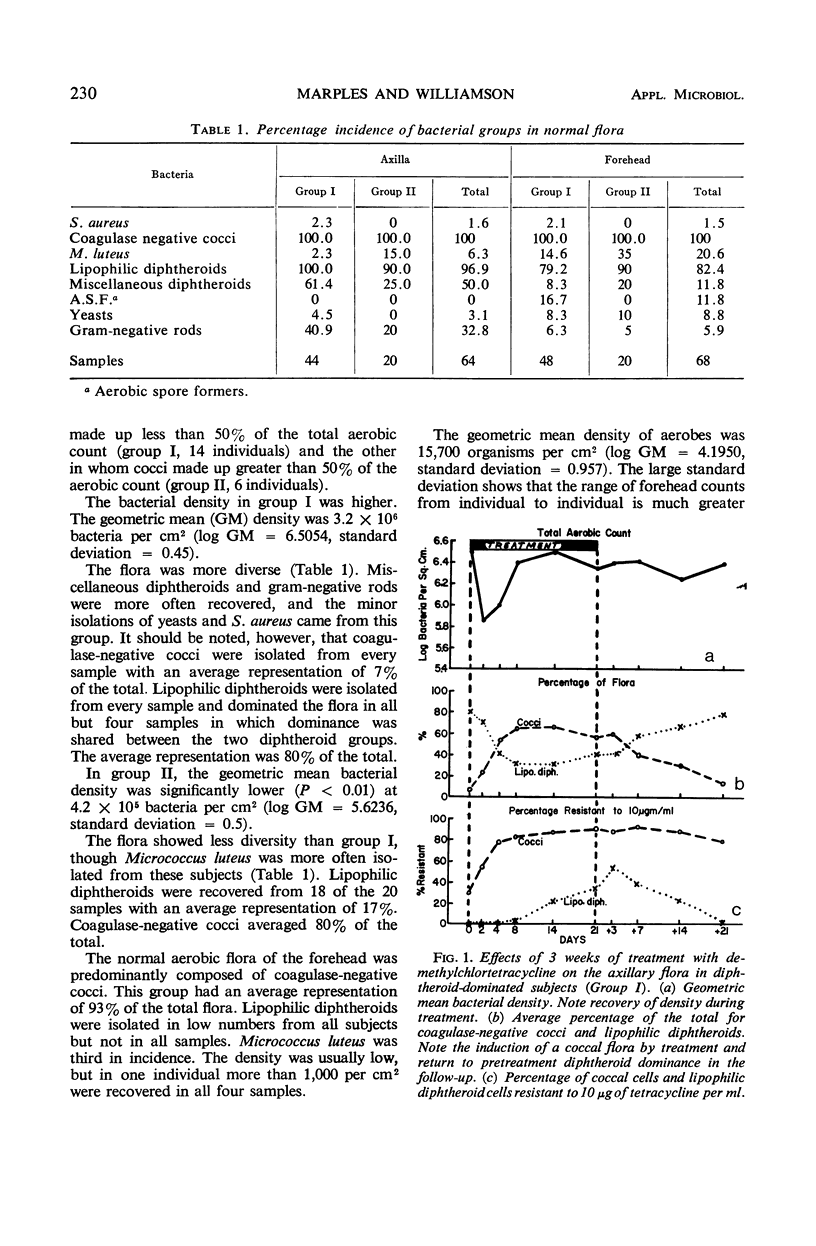
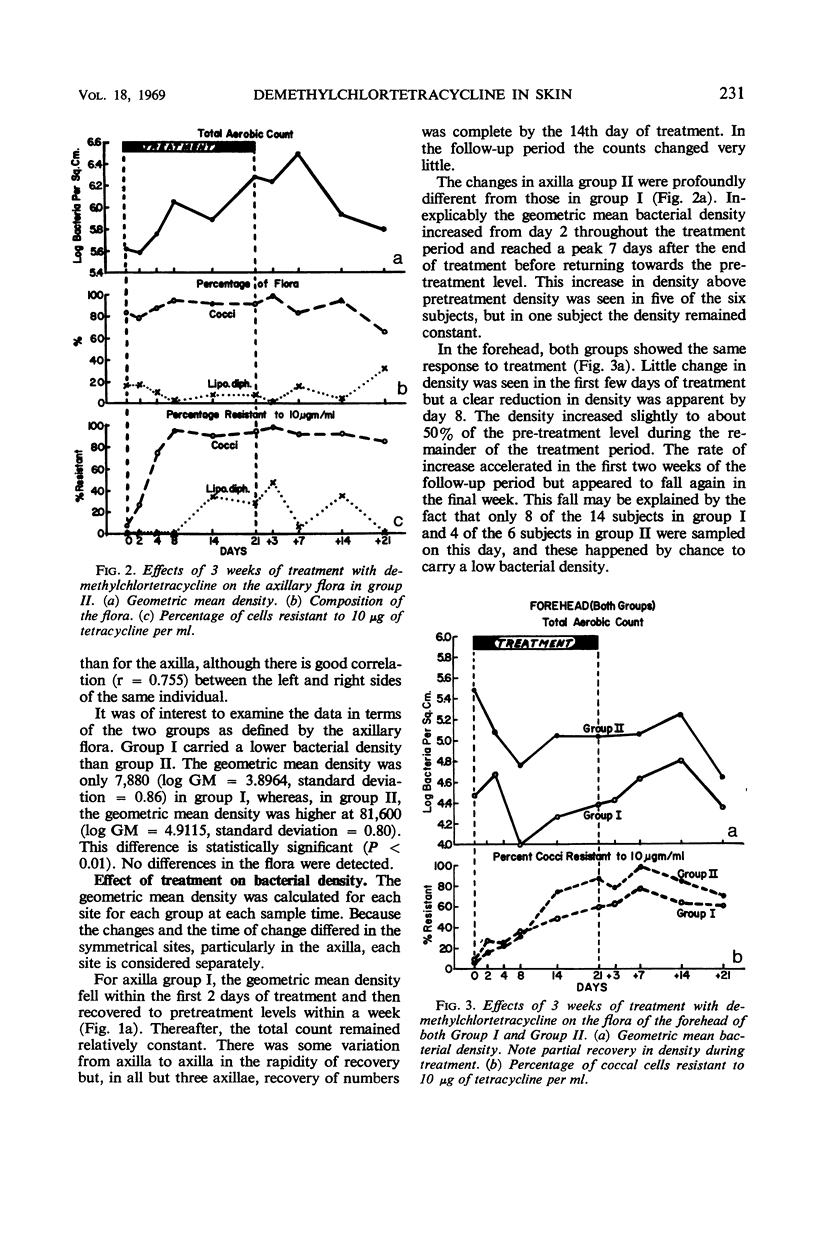
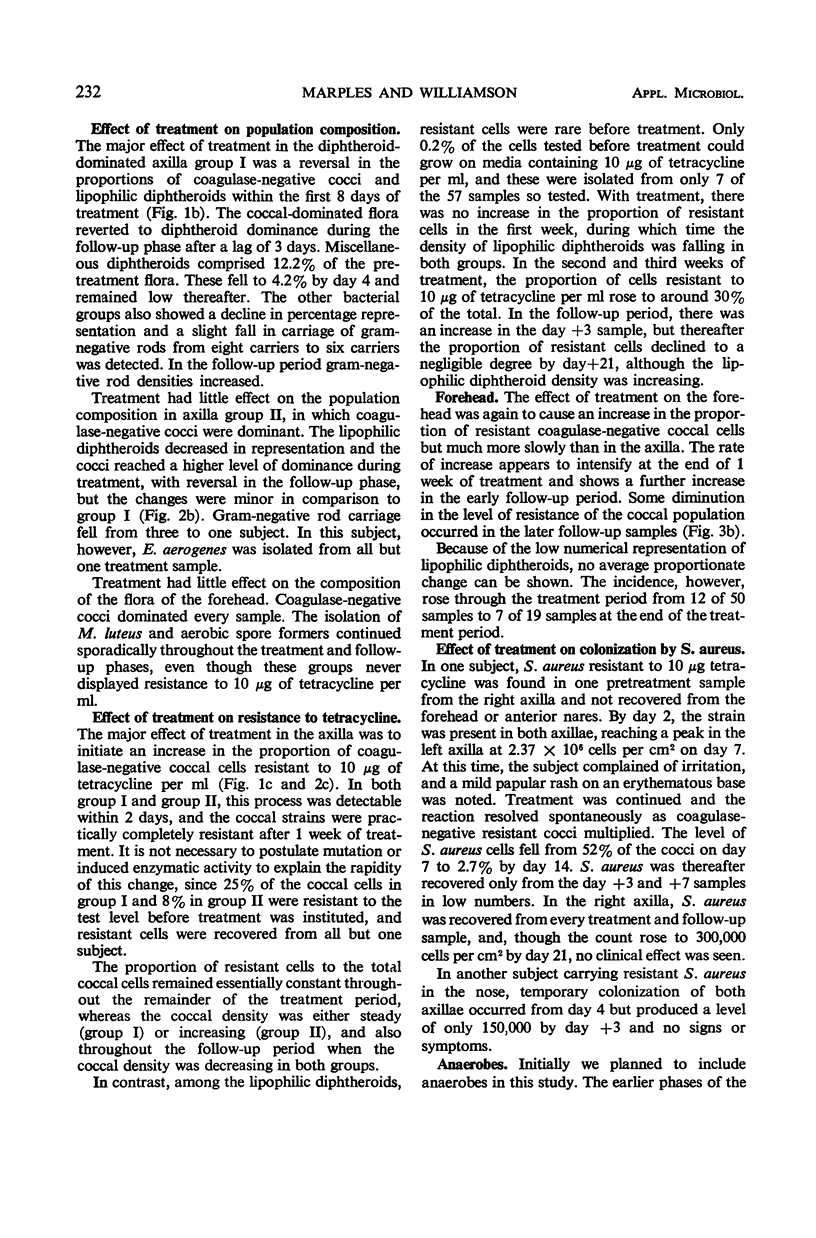
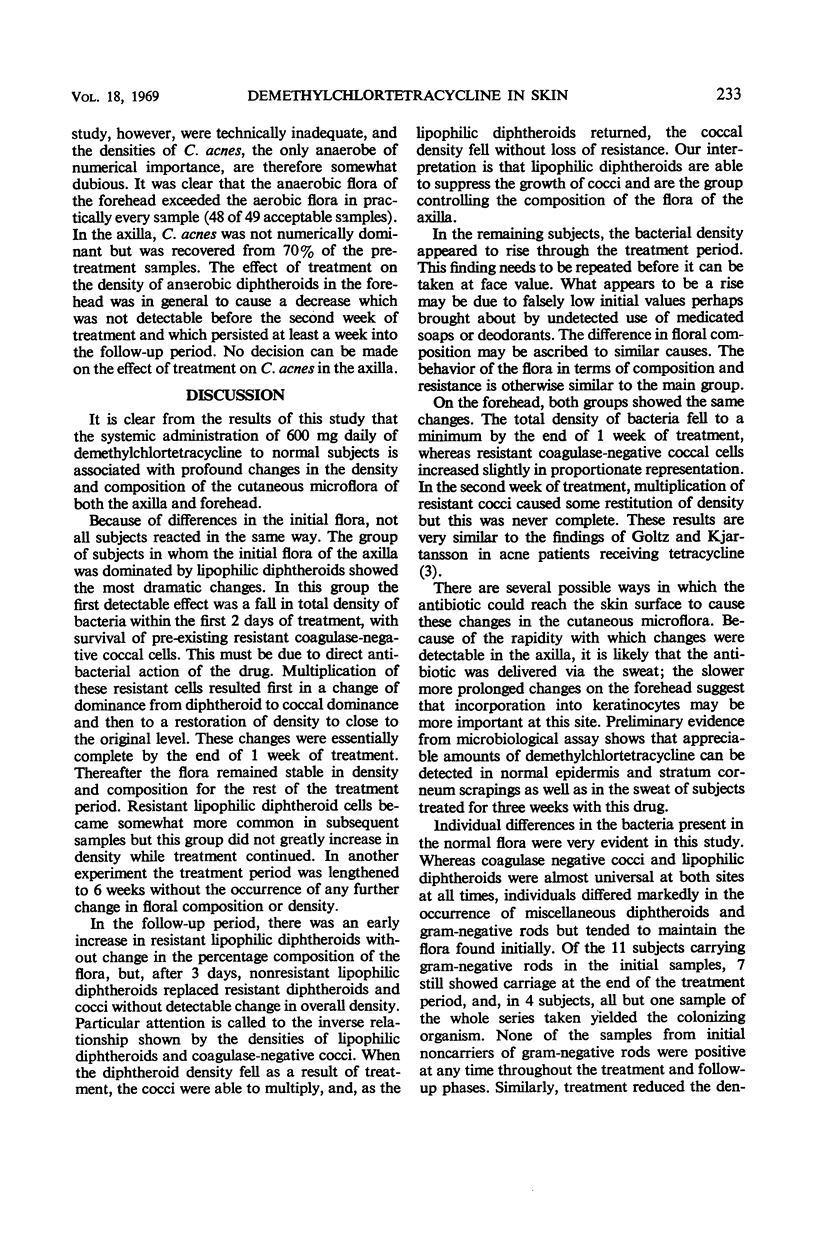
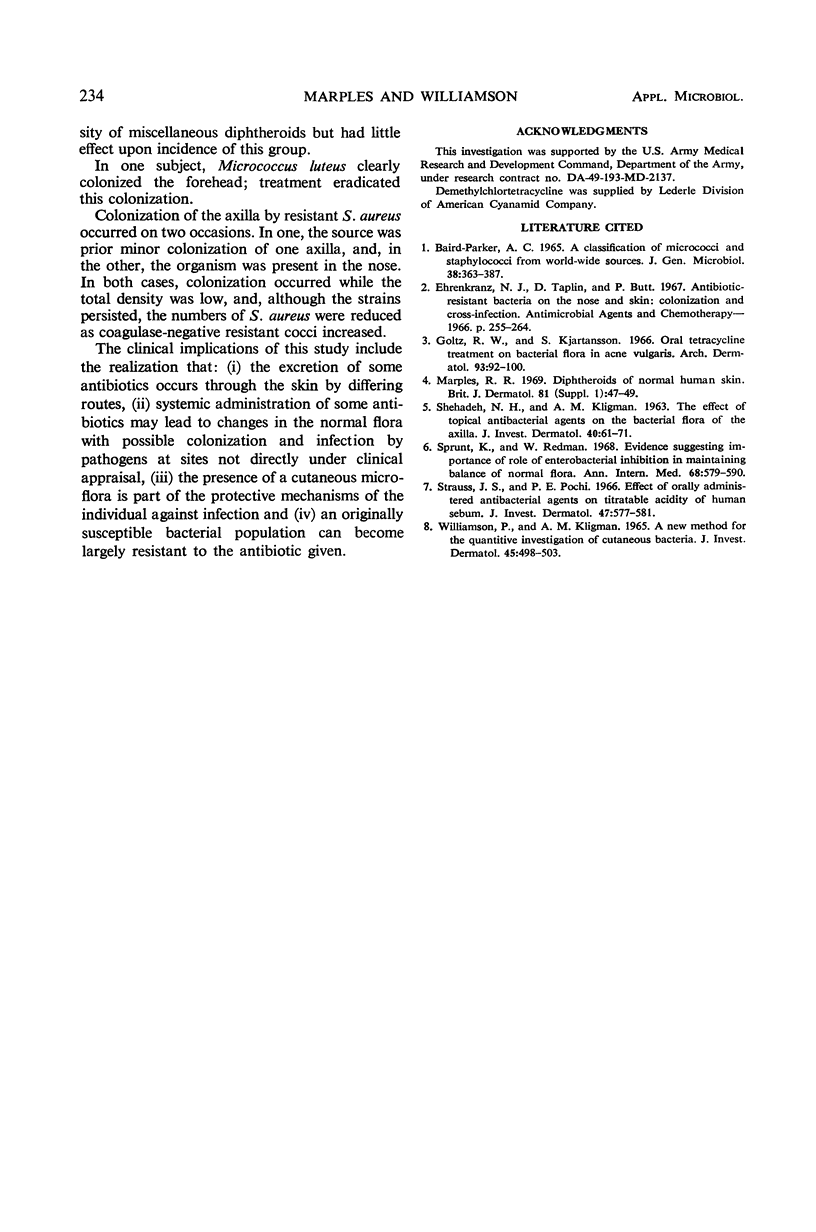
Selected References
These references are in PubMed. This may not be the complete list of references from this article.
- BAIRD-PARKER A. C. THE CLASSIFICATION OF STAPHYLOCOCCI AND MICROCOCCI FROM WORLD-WIDE SOURCES. J Gen Microbiol. 1965 Mar;38:363–387. doi: 10.1099/00221287-38-3-363. [DOI] [PubMed] [Google Scholar]
- Ehrenkranz N. J., Taplin D., Butt P. Antibiotic-resistant bacteria on the nose and skin: colonization and cross-infection. Antimicrob Agents Chemother (Bethesda) 1966;6:255–264. [PubMed] [Google Scholar]
- Goltz R. W., Kjartansson S. Oral tetracycline treatment on bacterial flora in acne vulgaris. Arch Dermatol. 1966 Jan;93(1):92–100. [PubMed] [Google Scholar]
- Marples R. R. Diphtheroids of normal human skin. Br J Dermatol. 1969;81(Suppl):47+–47+. doi: 10.1111/j.1365-2133.1969.tb12833.x. [DOI] [PubMed] [Google Scholar]
- SHEHADEH N. H., KLIGMAN A. M. The effect of topical antibacterial agents on the bacterial flora of the axilla. J Invest Dermatol. 1963 Jan;40:61–71. doi: 10.1038/jid.1963.10. [DOI] [PubMed] [Google Scholar]
- Sprunt K., Redman W. Evidence suggesting importance of role of interbacterial inhibition in maintaining balance of normal flora. Ann Intern Med. 1968 Mar;68(3):579–590. doi: 10.7326/0003-4819-68-3-579. [DOI] [PubMed] [Google Scholar]
- Strauss J. S., Pochi P. E. Effect of orally administered antibacterial agents on titratable acidity of human sebum. J Invest Dermatol. 1966 Dec;47(6):577–581. doi: 10.1038/jid.1966.187. [DOI] [PubMed] [Google Scholar]
- Williamson P., Kligman A. M. A new method for the quantitative investigation of cutaneous bacteria. J Invest Dermatol. 1965 Dec;45(6):498–503. doi: 10.1038/jid.1965.164. [DOI] [PubMed] [Google Scholar]


